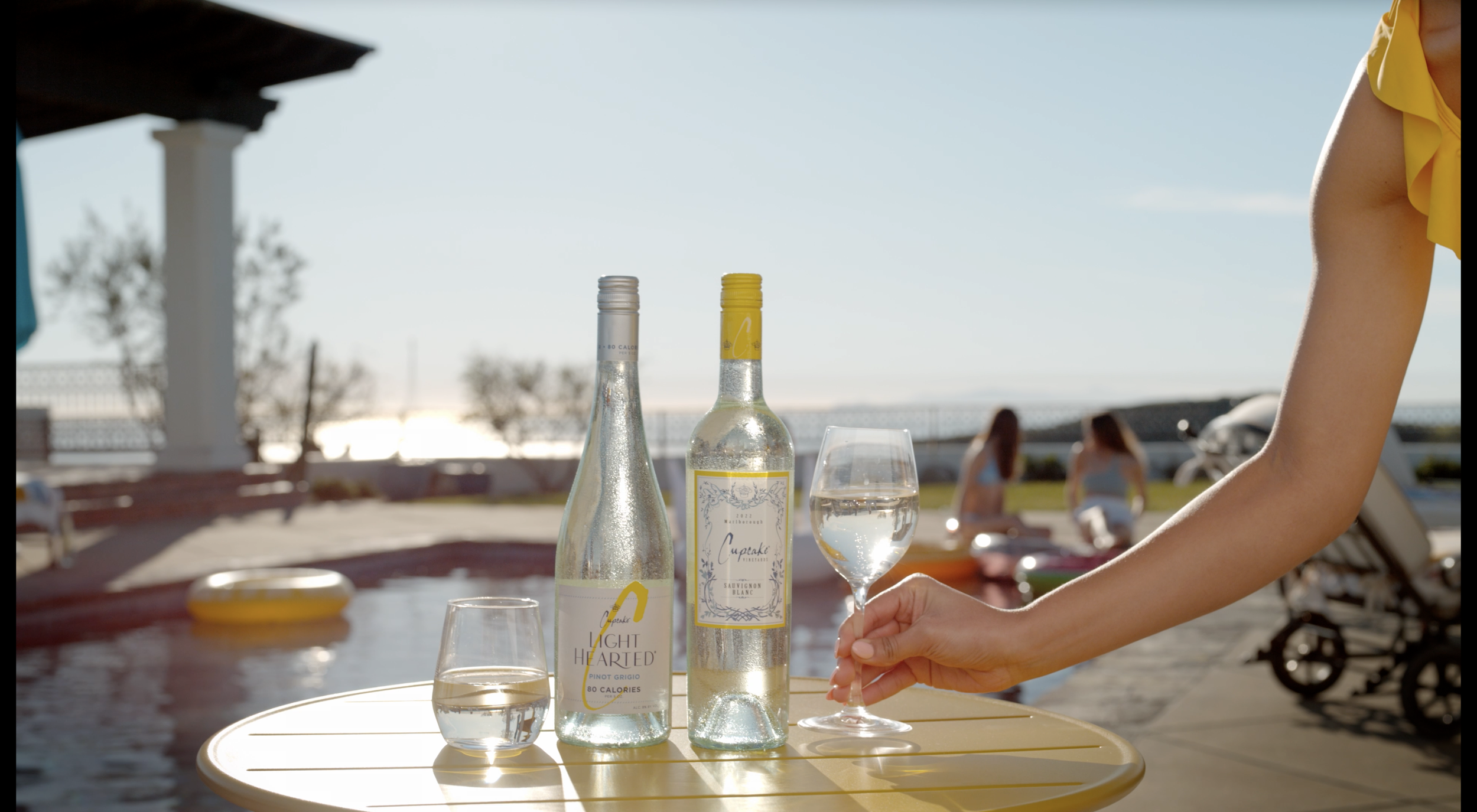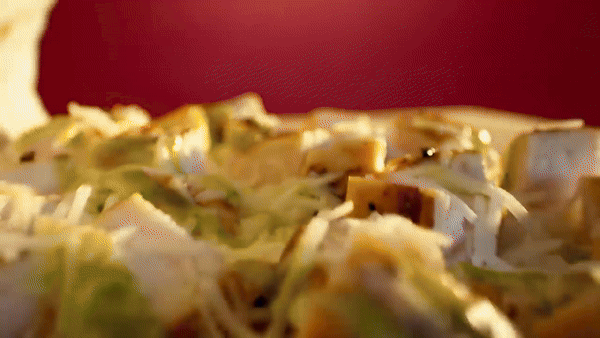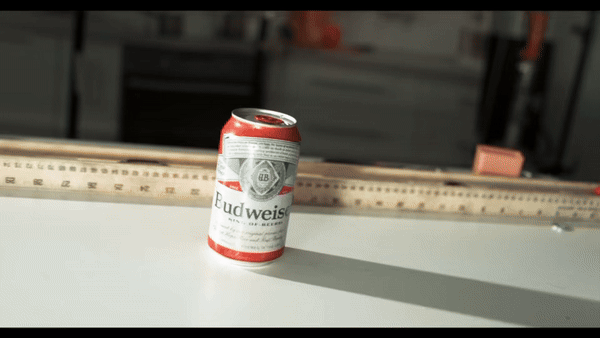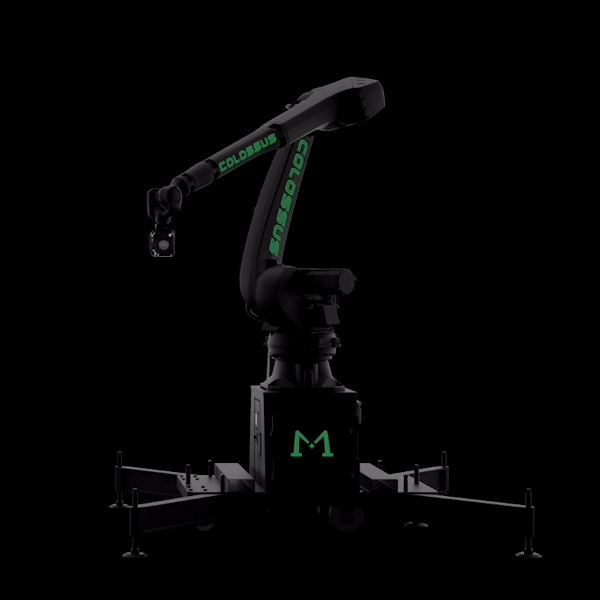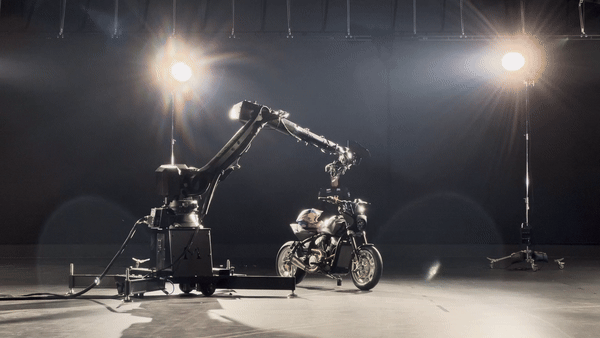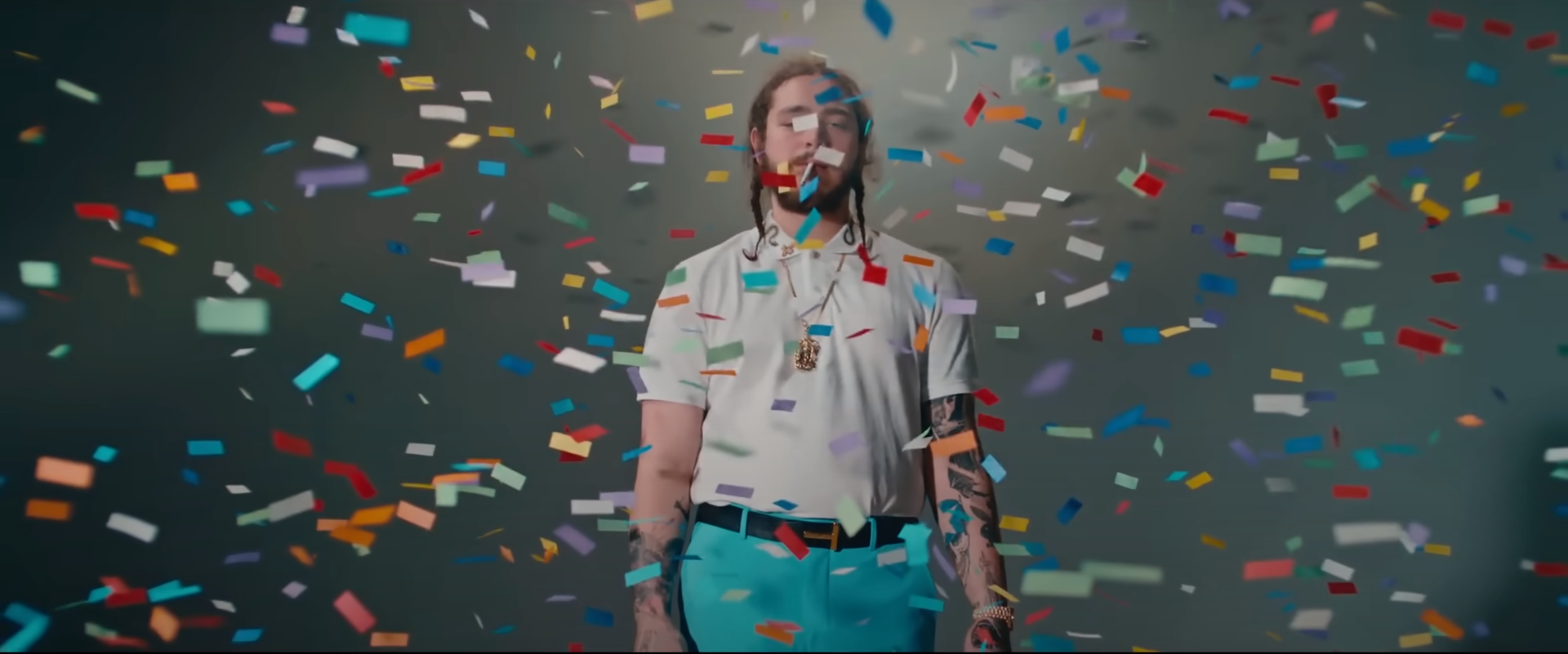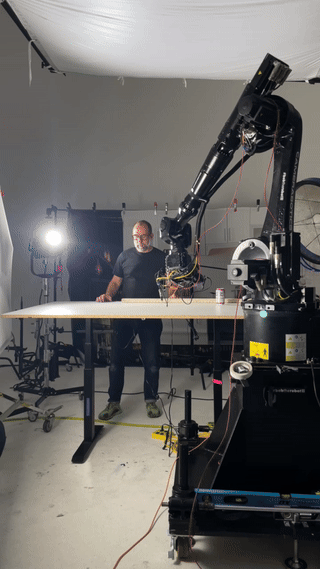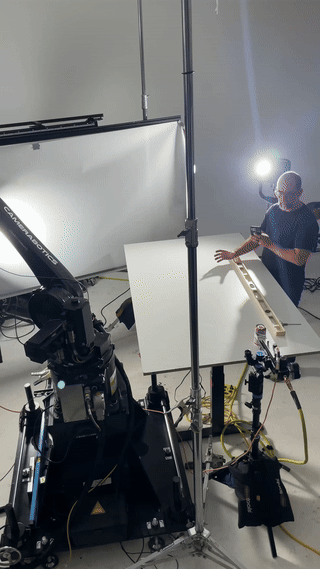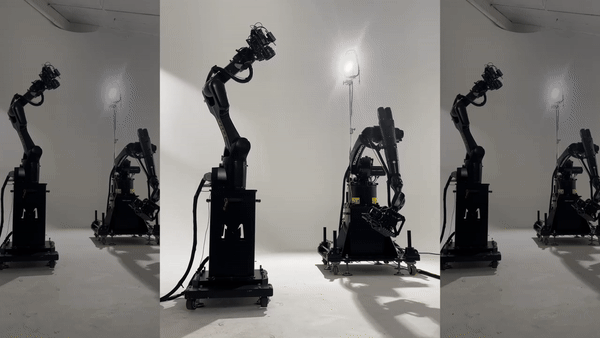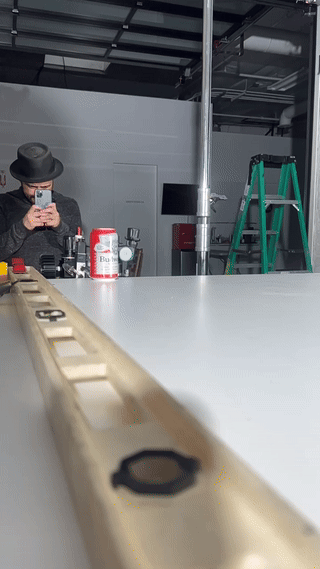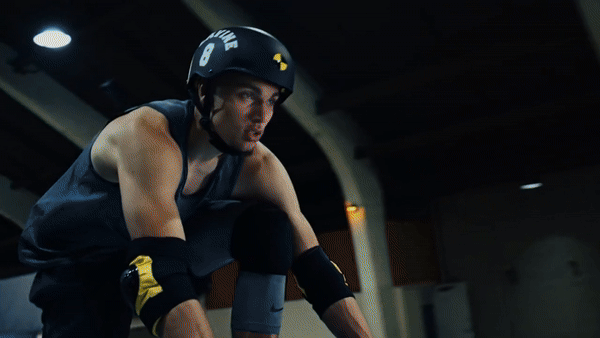Product Cinematography That Sells: From Beauty to Automotives
I’m Drew Lauer — a commercial director and director of photography in Los Angeles — and I specialize in product cinematography that doesn’t just look good, it sells. Whether I’m shooting a cosmetic product reveal, a rotating household appliance, or a chrome-drenched car hood under sunlight, the goal is always the same:
In today’s fast-scroll world, your product has less than 2 seconds to make an impression. That’s where I come in.
I’m Drew Lauer — a commercial director and director of photography in Los Angeles — and I specialize in product cinematography that doesn’t just look good, it sells. Whether I’m shooting a cosmetic product reveal, a rotating household appliance, or a chrome-drenched car hood under sunlight, the goal is always the same:
📸 Create craveable visuals that tell your brand’s story in milliseconds.
From skincare to sports cars, I’ve shot it all — often using Phantom slow motion, motion control filmmaking, and high-end cinematography techniques that deliver repeatable, scalable, and high-converting content for global campaigns.
Let’s break it down by category.
Beauty & Cosmetics Cinematography: Fluid, Textural, Precise
If you’ve ever seen a cream swirl, a serum drop gliding across skin, or a brush fluttering through lashes in slow motion — that’s not luck. That’s intentional beauty product cinematic video work.
As a beauty product videographer, I focus on:
Light diffusion and gradients that mimic skincare’s softness
Macro cinematography to highlight textures and shimmer
Slow motion cameras to elongate emotional moments
Motion control rigs for perfect choreography between camera and model
I’ve directed and shot cosmetics commercial videos for both indie brands and global powerhouses. Every project requires careful pre-visualization, testing, and collaboration with product stylists and makeup artists to ensure products look stunning under extreme scrutiny.
🧴 Tools of the trade:
Phantom Flex 4K for slow motion
Macro and tilt-shift lenses
Skin-safe modifiers and bounce boards
Studio LUX for controlled stage lighting
Whether it’s a beauty product advertisement video or a stylized product sequence for broadcast, I build each campaign to feel elevated, aspirational, and clean.
Automotive & Cars: Power, Precision, Detail
Shooting cars is a different beast altogether. It’s not just about speed — it’s about precision, control, and form.
As a cinematographer in Los Angeles, I’ve worked on everything from close-up car product shots to commercial production rolls featuring interior details, infotainment systems, wheel rims, and light movement across metal.
🔥 Key goals in automotive cinematography:
Control reflections with polarizers, softboxes, and flags
Use motion control photography for reveals and sweeps
Highlight brand cues — logos, lighting, trim, color
Use macro techniques to shoot stitching, controls, and surfaces
Whether we’re indoors at a Los Angeles video stage rental like Studio LUX or outside with drone support and daylight modifiers, I treat every angle as a chance to elevate the brand’s craftsmanship.
🚗 And yes — I shoot DP reels and BTS so you can share the process as well as the product.
Household Products: Real Function, Elevated Look
Shooting things like blenders, vacuums, air fryers, or water filters doesn’t sound sexy — but with the right techniques, it becomes visually magnetic.
As a commercial product director in Los Angeles, I’ve learned how to:
Animate user journeys in clean, intuitive ways
Film “invisible” features like suction, filtration, temperature control
Build tabletop production rigs for dynamic reveals and transitions
Use motion control filming to simulate user interactions
Product demos can feel dull without the right cinematography tips — which is why I bring a director’s eye to every scene. Even if it’s a button click or steam puff, I make sure it adds to the story.
💡Pro tip: Phantom slow motion isn’t just for beauty or food. It's amazing for demonstrating fluid motion, light cues, and internal product behavior — especially for product video in Los Angeles where competition is fierce.
Combining Motion Control, Robotics, and Drones
For complex product shots, I often integrate:
Motion control rentals (for perfect, repeatable camera paths)
Drone cinematography in Los Angeles (for exteriors or wide reveals)
Phantom camera rentals (for ultra-high-speed slow motion)
Whether you’re filming a slow motion commercial, a stylized product tease, or a cinematography reel, I can scale the crew and tools to match the vision.
Most of my shoots include:
Art department for product rigging
Lighting crew with HMI and RGB support
Food/beauty stylists as needed
Full DIT and playback system
BTS video content (because content about your content performs too)
Recent Product Cinematography Examples
🎥 Laneige Skincare Drops
Slow motion serum application across skin using Phantom and motion control rig. Textures and shine preserved in-camera. Shot at Optimist Studios.
Who Should Hire a Product Cinematographer?
If you're launching or refreshing any product in these industries:
Skincare / Beauty / Cosmetics
Automotive / eMobility
Household appliances / Kitchenware
Tech gadgets / Consumer electronics
Wellness and fitness products
You need a product cinematographer who understands the mix of aesthetic and engineering, sales and storytelling, precision and visual flow.
Final Word: If It’s Worth Selling, It’s Worth Filming Right
If your product needs to:
Pop off the screen
Tell a clear brand story
Stand out in crowded markets
Perform across digital and traditional channels
…then product cinematography isn’t a luxury — it’s a necessity.
I offer end-to-end production or standalone DP/director services — whatever your project needs. I shoot in LA, but travel worldwide, and I bring decades of experience, top-tier gear, and a team that delivers under pressure.
🎬 Let’s make something iconic.
📍 Director + DP based in Los Angeles
⚙️ Phantom, motion control, stylists, lighting — all in-house
🎥 Watch my director of photography reels here
Crave-Worthy Frames: Inside the Art of Food & Beverage Cinematography
In this blog, I’ll break down what makes great commercial food videography and drink videography, the gear I use (yes, we’re talking Phantom slow motion), and why brands should invest in high-end food cinematography if they want to stand out
If your mouth has ever watered from an Instagram ad or your scroll stopped dead at a slow-motion splash, chances are, you’ve been hooked by great food and beverage cinematography.
As a Los Angeles director of photography who’s shot everything from national QSR campaigns to indie drink brands, I’ve learned that food and beverage isn’t just about looking good — it’s about triggering cravings, emotion, and memory in just a few frames.
In this blog, I’ll break down what makes great commercial food videography and drink videography, the gear I use (yes, we’re talking Phantom slow motion), and why brands should invest in high-end food cinematography if they want to stand out.
The Goal of Food & Beverage Cinematography?
Make the viewer taste something they haven’t even touched.
That’s the whole job in one sentence. And it’s a lot harder than it looks.
When I’m directing or acting as a DP in Los Angeles for a food or beverage campaign, I focus on one thing above all: the emotional reaction. That can be:
A nostalgic hunger
A sense of comfort or indulgence
The thrill of refreshment
The sensory punch of spice, sweetness, or texture
And those emotions are triggered through light, texture, motion, and timing.
Slow Motion: The Secret Sauce
Slow motion isn’t a gimmick — it’s a storytelling tool. And for food and drink, it’s everything.
Using a Phantom Flex 4K camera, I can shoot at over 1,000 frames per second. That means I can stretch a 0.5-second soda splash into a 5-second moment of cinematic magic. Want to see condensation ripple across a glass in real time? You’ll need Phantom slow mo camera rigs and someone who knows how to light them.
Whether I’m shooting a beverage tabletop director role or capturing a burrito unwrapping in mid-air, slow motion photography makes those “impact frames” linger — long enough to make someone feel it.
And if you're looking for Phantom Flex rental or slow motion camera rental in Los Angeles — I’ve got you covered with in-house rigs and crew.
Motion Control + Food = Precision Storytelling
When I shoot drink pours, cheese pulls, or pancake stacks, I often bring in motion control filmmaking rigs. That means I can:
Lock in a repeatable camera path
Sync movement with lighting cues
Layer multiple elements in post
Hit precise marks even with live ingredients
Using tools like Colossus or MIA robotic arms, I can make commercial food video production feel like a choreographed dance — one that can be repeated until we get the perfect moment.
Food Stylists: The Unsung MVPs
None of this works without top-tier food styling and product wrangling. I collaborate with some of the best stylists in Los Angeles — people who know how to:
Torch a steak for perfect grill marks
Layer a sandwich so it doesn’t fall apart in camera
Frost a glass without it melting mid-shoot
Make an egg yolk break just right
If the product isn’t prepped for 6K detail, no amount of lighting or cinematography can save it. That’s why I only work with stylists who understand the demands of commercial production in Los Angeles.
Beverage Cinematography: From Craft Cocktails to Canned Energy
When it comes to video production for beverages, the requirements change. We’re often working with:
Carbonation and fizz
Cold-sensitive ingredients
Transparent glass or condensation-heavy surfaces
Bold colors like reds, oranges, and deep browns
Each of these elements requires specific lighting setups, modifiers, and timing tricks. Whether I’m filming a pour, a crack-open moment, or a slow swirl of an old-fashioned, I build custom rigs to get the job done.
Recent beverage projects have included:
Pacifico can launch with high-speed Phantom and motion control rigs
Guayaki splash ad featuring backlit yerba mate explosions
Larceny Bourbon rollout with synced lighting passes across the bottles
BTS Video is Part of the Deliverables
Today’s brands want behind-the-scenes (BTS) video almost as much as they want final edits. That’s why I build in options to shoot BTS reels on every shoot — showing the rigging, robotics, slow motion setups, and magic that goes into every moment.
Whether you’re posting to LinkedIn, Instagram, or your website, showing how the content was made creates instant trust and engagement with your audience.
Who Needs High-End Food & Drink Cinematography?
If you’re in one of these industries — you do:
Restaurants & QSRs
Beverage brands (alcoholic & non-alcoholic)
Packaged food and snacks
Bars, distilleries, and coffee brands
Food-tech and nutrition companies
A well-shot food or beverage cinematic video can drive conversions, awareness, and long-term brand identity. These shots live on billboards, TV, websites, and product packaging.
Why Hire a Director + Cinematographer?
Some shoots need a separate director and cinematographer. Others work best with a director/DP hybrid — someone like me who can bring a unified vision across lighting, timing, and storytelling.
If you already have a creative concept but need a food cinematographer in Los Angeles, I can step in to execute. If you want a full creative build from scratch, I can direct, plan, shoot, and deliver — with BTS and custom edits included.
Final Thoughts: Don’t Just Feed the Eyes — Hit the Taste Buds
In the world of food and beverage cinematography, you’re not just capturing texture. You’re tapping into memory, emotion, and hunger — in less than 10 seconds.
So if you’re looking for a commercial food videographer, beverage director of photography, or someone who’s got the gear, the crew, and the creativity to shoot your product with serious impact — let’s talk.
🎥 Explore my reel
📍 Based in Los Angeles
⚙️ Phantom cameras, motion control rigs, and food stylists ready
Getting on Top with Tabletop: Why Cinematic Tabletop Production is the Real Star of Commercial Filmmaking
In the high-stakes world of commercial video production in Los Angeles, there’s a cinematic subgenre that quietly dominates your screen — even if it only lasts for three seconds: tabletop cinematography
In the high-stakes world of commercial video production in Los Angeles, there’s a cinematic subgenre that quietly dominates your screen — even if it only lasts for three seconds: tabletop cinematography. Whether it's a soda splash in slow motion, steam rolling off a burger, or a drop of serum gliding down a cheek, tabletop production is where high-end cinematography, robotic precision, and brand storytelling collide.
At the center of this precision-driven world stands the tabletop director of photography (DP) — someone who doesn’t just shoot products but transforms them into cinematic heroes.
Tabletop Cinematography: Small Scale, Big Impact
So, what is tabletop cinematography? It’s the art of filming small products and food with extreme precision — close-ups, macro lenses, motion control, and Phantom slow motion cameras all come into play.
For commercial food video production or beauty product commercial videos, these shots are often the moment that makes or breaks a campaign. They live on social, OTT ads, and even Super Bowl spots. But the real magic happens before the first light is turned on.
Planning: The Unsung Star of Tabletop Video Production
Great tabletop cinematography starts well before the cameras roll. A good tabletop DP in Los Angeles knows that storyboarding, pre-visualization, testing, and rig engineering are non-negotiable. Want to drop a cookie into milk with a perfect splash and glow? You’ll need robotics, backlighting, and a very precise splash rig.
At Lux Studios Los Angeles, where a lot of this work happens, DPs like Drew Lauer have access to the best video stage rentals, prep kitchens, and motion control gear in the business. From lighting modifiers to condensation stylists, everything must be choreographed to the frame.
Slow Motion? You’ll Want a Phantom
Let’s talk slow motion. Real slow motion.
Forget what your iPhone can do. When you’re shooting commercial food videography or a beverage tabletop ad, you need a Phantom Flex 4K — the industry-standard slow motion camera that captures 1,000+ frames per second. That beer splash, that lime drop, that serum pour? Phantom makes it silky, cinematic, and craveable.
Whether it’s Phantom Flex rental, slow mo camera work, or Phantom camera slow motion capture, high-speed cinematography is essential to tabletop filmmaking. And knowing how to light it, time it, and direct it? That’s what separates the good from the elite.
Motion Control: Frame-Perfect Magic
For those dream shots that move around a product in perfect arcs or repeat the same action across multiple takes — motion control filmmaking is the answer. Systems like Colossus or MIA camera arms make it possible to combine precision movement with robot-controlled focus and timing.
Whether you’re creating a beauty product advertisement video, a cosmetics commercial video, or showcasing bar food videography, motion control photography is often the only way to make those liquid, light, and texture sequences sing.
It’s not just about gear — it’s about motion control cinematography techniques that require deep technical know-how.
It’s a Team Sport
No tabletop production happens alone. On any given shoot, there’s a small army of food stylists, rig builders, props, product wranglers, and lighting experts working behind the scenes. Add in a director of photography, a robot tech, a DIT, and a post-production team, and it starts to look like a mini feature film.
The best DPs in film production know how to lead a team that thrives on micro-adjustments — because when your hero is a drop of soda or a perfectly lit mascara brush, there’s no room for “almost.”
What Gets Shot?
If it sits on a table and needs to look amazing — it’s tabletop. That includes:
Food and beverage cinematography (think fast food, beer, cocktails, hot sauce, espresso)
Beauty product cinematic video (serums, makeup, skincare, nail polish)
Product video Los Angeles-style (cleaning sprays, candles, headphones, grooming kits)
Bar food photography and drink videography
Household items, kitchen gadgets, cookware, and tools
From QSR ads to luxury cosmetics, the style might change, but the process stays cinematic.
Why Tabletop Rules in 2025
In a world of 5-second ads and short-form content, you don’t have long to convince someone to care. That’s why cinematographers in Los Angeles are doubling down on micro-narratives — impact shots that tell a whole story in a flash.
Want to stand out on TikTok, YouTube, Instagram, or connected TV? You need shots that look expensive, intentional, and mesmerizing.
Tabletop is the place where visual design meets advertising strategy.
Why Work with a Tabletop DP?
A good director of photography in LA can shoot an interview. A great tabletop director of photography in Los Angeles can shoot a latte swirl, a chocolate bar break, and a shimmering serum pour — all in the same week.
This is specialist cinematography. It requires experience with:
Phantom camera rental Los Angeles
Lighting for macro texture
Cinematography techniques for products
Motion control rentals and robotics
Stylists who prep for 4K detail
Clients who expect seamless, fast delivery
It’s a small world, but it delivers big.
Final Word: Tabletop Is Its Own Kind of Cinematic Art
And if you're looking for a tabletop videographer or DP director who’s done it all — from beauty to barbecue, drinks to drills — get in touch.
🎥 Explore Drew Lauer’s cinematography reel, BTS, and tabletop campaigns
📍 Based at Lux Studios , Los Angeles
⚙️ Phantom camera, motion control, and crew included
How to Make Products Look Cinematic in Commercial Videos
As a director and director of photography (DP), my job is to elevate a product beyond a simple object on screen. Through lighting, movement, composition, and storytelling, we transform everyday items into icons. Whether it’s a luxury perfume bottle, a tech gadget, or a cup of steaming coffee — the right cinematic treatment makes all the difference.
In today’s saturated content landscape, standing out isn’t just about having a good product — it’s about presenting that product in a way that feels premium, desirable, and unforgettable. That’s where product cinematography comes in. For brands investing in commercial video production, making the product the hero of the story is the single most important goal.
As a director and director of photography (DP), my job is to elevate a product beyond a simple object on screen. Through lighting, movement, composition, and storytelling, we transform everyday items into icons. Whether it’s a luxury perfume bottle, a tech gadget, or a cup of steaming coffee — the right cinematic treatment makes all the difference.
Why Product Cinematography Matters
Product cinematography is a specialized form of commercial cinematography that focuses on creating visual stories around products. You’ve seen it: the way a bottle rotates under a beam of light, the shimmer of condensation on glass, the way shadows fall to create mystery or elegance. These moments don’t happen by accident. They are carefully crafted.
This is especially important in advertising video where attention spans are short, expectations are high, and every frame has to convert. Products need to grab attention instantly — and that starts with how they’re presented.
Creating a Cinematic Look for Products
So how do we take an ordinary object and make it cinematic? Here’s my approach, built from years of experience in product cinematography and commercial video shoots:
1. Lighting Is Everything
The first step is building a lighting plan that matches the brand’s tone and the product’s shape, texture, and material. Reflective surfaces, matte finishes, translucent packaging — all of these require different lighting setups.
For example, when shooting a skincare bottle with chrome caps, we need to avoid hot spots and flare while still giving the object dimension and shine. This often means crafting custom light boxes, building bounce cards, or flagging light sources with surgical precision.
2. Motion Control for Perfect Precision
Motion control allows us to create smooth, repeatable camera moves around products. I often use robots like MIA or Colossus from Motorized Precision for motion control cinematography, especially when we want to orbit the product or pair the movement with VFX in post.
This is vital for modern advertising videos where subtle glides, push-ins, or reveals need to feel effortless and intentional — and motion control gets us there with pixel-perfect precision.
3. Set Design That Complements, Not Competes
Product is king, but the environment it sits in should elevate it. I often collaborate with art directors and stylists to build mini-sets that provide context but don’t distract. Think floating shelves for cosmetics, minimalistic tech-inspired surfaces for gadgets, or textured stone backgrounds for luxury goods.
Every prop, surface, and color is chosen with the product’s story in mind.
A Director’s Eye: Framing the Hero
As a commercial director and DP, I’m not just lighting the product — I’m building a narrative around it. What does this item represent? What mood does it carry? Is it aspirational, practical, emotional?
My shot list is crafted to answer those questions through lens choice, composition, and camera movement. A close-up macro shot of a product texture might be used to evoke quality. A wide hero shot with dramatic lighting may suggest power. Every shot is intentional.
Case Study: Making a Bottle Look Like a Work of Art
In one of my favorite beverage cinematography shoots, we had to make a standard-sized energy drink look like a cinematic centerpiece. Using motion control, we programmed a slow 360 orbit with a vertical lift. The lighting setup included edge lights to catch the curves and a rotating spotlight to simulate sunlight movement.
We used condensation spray and practical splashes in the background to add energy and texture. When the final footage came together, the bottle looked like it belonged in a feature film — not just a TV spot.
That’s the power of commercial video production when it's planned and executed by a team that understands the language of cinema.
Final Thoughts
Making a product look cinematic is about more than pretty pictures — it’s about strategy, intent, and execution. It’s about making your product feel like the hero your audience can’t ignore.
If you’re a brand, agency, or production company looking to create high-impact commercial video, I’d love to collaborate. From food cinematography to motion control video shoots, I bring an experienced eye, the right tools, and a deep love for the craft.
Let’s make your product the star of the screen.
How Motion Control Unlocks Creative Possibilities in Commercial Video Production
As the industry continues to demand shorter timelines and higher production value, motion control cinematography is poised to be a staple in Los Angeles commercial video production. The ability to plan, iterate, and deliver repeatable results is invaluable — not just for DPs, but for producers, editors, and clients.
In the world of commercial cinematography, precision and consistency are everything. Whether you’re shooting a high-speed food pour, a dramatic product close-up, or a beverage splash in slow motion, the margin for error is razor-thin. That’s where motion control comes in — a game-changer for video production, especially in advertising video and product cinematography.
What Is Motion Control?
Motion control involves programming camera movement through robotic rigs — like the Colossus or MIA systems — to execute repeatable, ultra-precise moves. These robotic arms allow for millimeter-accurate shots that can be repeated again and again with absolute consistency. This is especially vital when working with commercial video production where visual perfection is non-negotiable.
In high-end food cinematography, for example, motion control allows the camera to capture a steaming burger stack in ultra slow motion with just the right amount of parallax and lighting precision. In product cinematography, it lets you orbit a luxury watch or perfume bottle with flawless smoothness, creating dynamic shots that would be nearly impossible with traditional gear.
Why Motion Control Matters in Commercial Shoots
From a director of photography (DP) standpoint, motion control opens up a level of creativity and flexibility that’s hard to achieve otherwise. It offers:
Repeatable moves: Whether you’re compositing different elements or shooting variations, you can get the exact same camera path every time.
Precision at scale: Perfect for tabletop shoots or macro video production that requires exact focus shifts, lighting changes, or tilt-roll combos.
Complex choreography: Match movement to music cues, VFX markers, or in-camera transitions for jaw-dropping sequences.
These features make motion control ideal for advertising video, where each frame has to sell an idea, emotion, or product feature — and it has to do it with visual clarity and impact.
Bringing Ideas to Life Frame by Frame
When Drew Lauer is behind the lens — and behind the joystick — motion control cinematography becomes a tool to elevate not just visuals but storytelling. Clients often come in with an ambitious storyboard that seems impossible. With motion control and proper pre-visualization (pre-viz), Drew and his team can break it down and build it up again into something that’s not just feasible, but remarkable.
Take the example of a food commercial video where a spoon swirls through yogurt and berries land in place mid-motion. The robot is programmed to match the food choreography precisely. Each take is reviewed, refined, and reshot until the action syncs perfectly — all while maintaining lighting consistency and visual rhythm.
Or think about a product cinematography shoot where a sleek tech gadget glides through beams of light on a turntable. With Colossus, Drew can achieve those arcs, flares, and pull-backs in camera — not in post — bringing a real tactile feel to the footage.
Challenges (And Why They’re Worth It)
Let’s be honest — motion control is not plug-and-play. It requires intensive setup, creative programming, and a deep understanding of cinematography. But the results are cinematic magic.
Drew often compares it to conducting an orchestra: every movement, cue, and frame must work together harmoniously. There are moments when a robot is off by a centimeter and everything has to be reset. But that’s the difference between just “capturing a shot” and “crafting a visual.”
When brands want to elevate their advertising video to a level where every detail is in sync — from the lighting on a soda bottle to the reflection on a car logo — motion control delivers.
Elevating the Role of the Director/DP
For Drew, using motion control isn’t just about tech for tech’s sake. It’s a way to support his work as a director and DP, combining artistic vision with technical execution. From overseeing set builds and lighting to coordinating with food stylists or product specialists, motion control allows Drew to be hands-on while also staying focused on the bigger picture.
Because of its precise nature, motion control also enhances collaboration between departments — something vital for a successful commercial video shoot. Art directors, brand leads, and editors can view the same take and know exactly what they’ll be working with in post.
Future-Proofing Commercial Cinematography
As the industry continues to demand shorter timelines and higher production value, motion control cinematography is poised to be a staple in Los Angeles commercial video production. The ability to plan, iterate, and deliver repeatable results is invaluable — not just for DPs, but for producers, editors, and clients.
From food cinematography to product cinematography, the demand for dynamic, scroll-stopping content is only growing. Robots like Colossus and MIA aren’t just cool gear — they’re creative allies in telling visual stories with impact.
The Art of Making Food Look Irresistible on Camera
In the world of food cinematography, few things are as satisfying—or as technically demanding—as making everyday ingredients look larger than life. The way light hits the skin of a tomato, the rise of steam from grilled vegetables, or the slow-motion pour of syrup on pancakes can all transform simple products into cinematic centerpieces. It’s not just about visuals—it’s about emotion, storytelling, and appetite appeal.
In the world of food cinematography, few things are as satisfying—or as technically demanding—as making everyday ingredients look larger than life. The way light hits the skin of a tomato, the rise of steam from grilled vegetables, or the slow-motion pour of syrup on pancakes can all transform simple products into cinematic centerpieces. It’s not just about visuals—it’s about emotion, storytelling, and appetite appeal.
As a Director of Photography (DP) specializing in food cinematography, commercial cinematography, and advertising video, I’ve learned that success comes from precision, planning, and a deep understanding of the craft. Whether it’s a commercial video for a national fast food brand or a boutique health drink, the goal remains the same: to make viewers feel something—and crave what they see.
Lighting: The Secret Ingredient in Food Cinematography
Lighting is where it all begins. Unlike narrative film, where lighting supports story or mood, in food cinematography, it serves the dish. Food has texture, sheen, translucency, and volume. Lighting must showcase every element—especially in macro shots or slow-motion moments.
In commercial cinematography, every lighting decision impacts the final outcome. A slight change in angle or intensity can turn an average plate into a mouthwatering visual masterpiece. My job as a DP is to make that transformation happen, shot after shot.
Motion Control: Bringing Precision to Food Cinematography
When working with motion control, I can design and program robotic camera movements with millimeter accuracy. This is crucial in food cinematography, especially when we’re shooting dynamic sequences like pouring drinks, melting cheese, or food splashes.
Motion control allows me to repeat complex moves across multiple takes, which is invaluable for VFX integration and multi-layer composites. Want to capture that perfect moment when a burger lands on a bun in slow motion? Motion control can deliver the repeatability needed to nail the timing, lighting, and focus every time.
From tabletop commercials to advertising video campaigns, the combination of motion control and product cinematography creates a workflow where the product can be the undisputed star of the show.
Camera Movement: Adding Flavor Through the Lens
Food looks great in stills, but it comes to life with camera movement. As a cinematographer, I use dolly moves, jib sweeps, slider shots, and crane lifts to create dynamic, engaging visuals. Motion sells the sizzle—literally.
For example, I love pulling focus across multiple dishes in a single shot, or doing a parallax move around a plated entrée to give it depth and elegance. These movements add a premium feel to the production and help elevate commercial videos into cinematic territory.
Whether I’m working with a traditional crew setup or using cinema robots for ultra-smooth, pre-programmed shots, camera movement is always strategic. It’s not just to look good—it’s to tell a story and guide the viewer’s eye.
Pre-Production: Planning the Perfect Plate
You can’t “wing it” in food cinematography. Everything is pre-planned—from lighting diagrams to shot lists to food styling coordination. In pre-production, I collaborate with creative directors, stylists, and set designers to align on the visual tone and messaging. Are we going for indulgent and rich? Fresh and healthy? Rustic and homemade? Each look requires different technical choices.
I’ll also scout the location for ideal lighting setups and test out motion control moves in advance. Previs is a huge part of commercial video production—especially for product cinematography that demands precision.
When the team is in sync during pre-production, the shoot flows smoothly, and the final advertising video is that much stronger.
Collaboration on Set: It Takes a Village
Food cinematography is a team sport. Stylists, gaffers, grips, camera assistants, robot techs, VFX supervisors—we all work together to make the product look its best. My role as a DP is to communicate clearly, stay nimble, and make sure each shot is executed as planned.
On some shoots, I’ll be directing high-speed cameras while also operating motion control robots. On others, I might be working alongside a creative director to adjust compositions on the fly. Versatility and teamwork are essential to success in any commercial cinematography setting.
Why I Keep Coming Back to Food
There’s a special kind of joy in shooting food. It’s relatable, universal, and deeply emotional. Everyone connects with it. In my career as a cinematographer, food shoots have been some of the most challenging—and the most rewarding.
What I love most is how food cinematography combines so many elements of the craft: lighting, motion, storytelling, composition, color. You get to use the full creative toolkit. And the results—when done right—are stunning.
From national campaigns to boutique product videos, I approach each job with the same dedication: making the product the hero and turning simple ingredients into cinematic stars.
A Guide to Motion Control Filmmaking
Motion control filmmaking isn’t just a tool—it’s a language. It allows directors and cinematographers to bring precise, stylized, and technical shots to life. From commercial video production to high-speed tabletop cinematography, the potential is limitless. If you're looking to elevate your next shoot, motion control might be your secret weapon.
Motion control filmmaking is transforming how we shoot commercials, music videos, and branded content. If you’ve seen a perfectly timed liquid splash or a dynamic camera movement that loops seamlessly—you’ve probably witnessed motion control in action. Let’s break down what it is, how it works, and why it's become essential in commercial video production.
What is Motion Control?
Motion control is a system of programmable camera movement using a robot arm. It allows filmmakers to repeat precise camera paths down to the millimeter, frame by frame. This unlocks advanced visual effects, product showcase shots, and unmatched timing precision.
At Drew Lauer Creative, we often shoot with the MIA and Colossus robot arms by Motorized Precision, both capable of executing cinematic robot movements at high speeds.
Why Use Motion Control?
Repeatability: Match camera moves across multiple takes or elements for VFX work.
Precision: Nail complicated shots with consistent results.
Creativity: Explore angles and transitions impossible with traditional rigs.
It’s invaluable for tabletop production, slow motion cinematography, and synchronized multi-element shots.
Typical Motion Control Workflow:
Pre-Viz: We map out camera moves digitally, test timing, and adjust for product framing.
Set Build: The team rigs everything around the robot's movement paths.
Shoot: We run multiple passes—hero, plate, effects—on the same track.
Post: VFX integrates everything with perfect alignment.
Best Uses for Motion Control:
Beverage cinematography (pour shots, sprays)
Product cinematography (360 turns, hero reveals)
Food cinematography (ingredient drops, sauce slow-mo)
Music videos (match cutting in loops)
The Robots I Use:
MIA: Compact, fast, ideal for tight tabletop spaces.
Colossus: Larger reach, powerful for dramatic moves and bigger set pieces.
Both are staples in my commercial toolkit as a Los Angeles DP specializing in motion control filmmaking.
Conclusion:
Motion control filmmaking isn’t just a tool—it’s a language. It allows directors and cinematographers to bring precise, stylized, and technical shots to life. From commercial video production to high-speed tabletop cinematography, the potential is limitless. If you're looking to elevate your next shoot, motion control might be your secret weapon.
Top 10 Considerations for a Director of Photography on Food and Beverage Commercials
Shooting food and drink may look simple, but food cinematography is one of the most technical and rewarding challenges for a director of photography.
Shooting food and drink may look simple, but food cinematography is one of the most technical and rewarding challenges for a director of photography. As someone who spends much of my time shooting food and beverage commercials in Los Angeles, here are 10 crucial things I keep in mind every time I step on set.
1. Lighting is Everything:
Food needs to feel natural, crave-worthy, and three-dimensional. I often lean toward soft key lights, bounce fills, and subtle backlight to create a sense of freshness.
2. Lens Selection for Texture:
Close-up macro shots demand lenses that render crisp details. I frequently use tilt-shift or probe lenses for hero shots that show melting cheese, bubbling sauces, or condensation.
3. Motion Control Makes It Pop:
Motion control in food cinematography allows us to repeat dolly moves over and over—ideal for complex multi-layer shots. It’s a must for high-end tabletop production, especially when syncing to slow motion.
4. Collaborating with Food Stylists:
Working with top-tier stylists is essential. They make the food look beautiful; I make it cinematic. The relationship between the DP and stylist is built on trust, timing, and visual taste.
5. Controlling Reflections:
6. Color Accuracy:
A burger should look juicy and golden brown—not flat or over-saturated. I work with calibrated monitors and often pre-light scenes using stand-ins to perfect the look.
7. Storytelling Through Movement:
Even in a 6-second ad, movement matters. A slow reveal of a taco on a turntable, a whip pan into a table spread—these moves give energy to the product.
8. Planning with Pre-viz:
Pre-visualization is crucial. I often sketch out camera moves or run simulations using motion control software. This makes shoot day more efficient and creative.
9. Shoot with Post in Mind:
I coordinate with the post team to ensure color grading, VFX, and timing align with how we captured footage. This reduces surprises in delivery.
10. Make the Product the Hero:
At the end of the day, the food is the star. I approach each setup with reverence—how can we shoot this burger like it’s a movie star?
Conclusion:
Being a food and beverage cinematographer means thinking like a chef, engineer, and visual poet all at once. Whether I’m shooting fast food, craft beer, or upscale cocktails, the same rules apply: capture emotion, texture, and flavor. From product cinematography to tabletop production, these 10 steps guide my process every time.
What is Cinematography? And What Does a Cinematographer Do on a Commercial Shoot?
Cinematography is more than just pointing a camera and hitting "record." It’s the heart of visual storytelling—the art of crafting a scene that speaks as much through lighting, lensing, movement, and mood as it does through dialogue or action.
Introduction:
Cinematography is more than just pointing a camera and hitting "record." It’s the heart of visual storytelling—the art of crafting a scene that speaks as much through lighting, lensing, movement, and mood as it does through dialogue or action. As a director of photography (DP) based in Los Angeles, I’m constantly asked, “What exactly does a cinematographer do?” Let’s break it down.
The Role of a Cinematographer:
A cinematographer, also known as a director of photography, is responsible for the visual execution of a film or commercial. While the director interprets the script and leads the talent, the DP brings that vision to life with cameras, lighting, composition, and movement.
In commercial production, this includes:
Collaborating with the director and creative team during pre-production
Choosing camera packages, lenses, filtration, and lighting gear
Designing camera movements and working closely with grip and electric teams
Overseeing test shoots and pre-visualization (pre-viz) work
Directing the lighting setup to achieve a particular mood or look
Why Cinematography Matters in Commercials:
In advertising video and commercial video production, time is money. Brands invest heavily to tell compelling stories in 15 to 60 seconds. Every frame counts.
Product cinematography in particular requires precision. Whether you’re filming food, skincare, or electronics, the product needs to look its absolute best. The lighting, reflections, depth of field, and movement all contribute to this goal. That’s where the DP’s expertise shines.
Collaboration is Key:
On set, the cinematographer works in tandem with:
The director (to execute their vision)
The gaffer (for lighting)
The key grip (for rigging and support)
The camera operator or robot motion control operator (for movement)
This collaboration ensures cohesion from storyboard to final cut.
Technical Decisions That Make a Difference:
Some key decisions I make as a cinematographer include:
Camera choice (Red, ARRI, Phantom, etc.)
Sensor format and aspect ratio
Lighting modifiers (softboxes, bounce, diffusion)
Color temperature to match the creative tone
In motion control filmmaking, I also work closely with the robot techs to plan moves frame-by-frame. Every decision supports the story, even if it’s a 5-second shot of a beverage can.
The Power of Motion Control:
Robot motion control elevates cinematography by enabling precise, repeatable movements—ideal for visual effects, slow motion, and tabletop production. In product cinematography, it’s unmatched for showcasing dynamic angles, timing, and textures.
In my work as a food cinematographer and beverage director of photography, motion control has helped make sauce pours, can splashes, and steam trails look poetic.
Why I Love Cinematography:
Every day on set, I get to solve problems creatively. Lighting a burger to make it look crave-worthy under studio lights? That’s the fun part. Framing a handheld slow-motion dolly move through a kitchen scene? Even better.
What keeps me hooked is that cinematography blends the technical with the emotional. It’s storytelling through light and lens—and I can’t get enough of it.
Conclusion:
Cinematography is the visual voice of a story. As a cinematographer in Los Angeles, my job is to capture emotion, elevate the product, and make brands look unforgettable. Whether it’s food cinematography, product cinematography, or a full commercial campaign, the goal remains the same: every frame should feel intentional.
The Art of Food and Beverage Cinematography: Crafting Visual Stories in Commercial Video Production
Food and beverage cinematography is a blend of art and science, requiring a deep understanding of visual storytelling and technical expertise. Through tabletop production and the creative vision of skilled DPs, ordinary products are transformed into captivating visuals that resonate with audiences and drive consumer engagement.
Introduction
In the competitive landscape of advertising and commercial video production, the visual portrayal of food and beverages plays a pivotal role in capturing consumer attention. Food cinematographers and beverage directors of photography (DPs) are at the forefront of this creative endeavor, transforming everyday products into visual masterpieces that entice and engage audiences.
The Essence of Food and Beverage Cinematography
Food and beverage cinematography is more than just filming; it's about storytelling through visuals. A skilled food cinematographer understands the nuances of lighting, composition, and movement to highlight the textures, colors, and appeal of culinary creations. Similarly, a beverage DP focuses on capturing the effervescence of a drink, the condensation on a glass, or the smooth pour that makes viewers crave a taste.
Tabletop Production: The Studio Behind the Scenes
Tabletop production is a specialized area within commercial video production that focuses on filming small-scale subjects like food and drinks in a controlled studio environment. This setup allows for meticulous control over lighting, camera angles, and motion, ensuring that every droplet, crumb, or bubble is captured with precision. Product cinematographers utilize this technique to create compelling visuals that elevate the perceived value of the product.
Key Techniques in Food and Beverage Cinematography
Lighting Mastery: Utilizing soft, diffused lighting to eliminate harsh shadows and highlight the natural appeal of the product.
Camera Movement: Incorporating slow-motion and dynamic camera movements to add drama and focus on specific product features.
Macro Photography: Employing macro lenses to capture intricate details that are not visible to the naked eye, such as the texture of a crust or the fizz in a soda.
Color Grading: Adjusting colors in post-production to enhance the visual appeal and ensure consistency across different shots.
Set Design and Styling: Collaborating with food stylists and set designers to create an environment that complements the product and tells a cohesive story.
The Role of the Director of Photography
The DP is instrumental in bringing the director's vision to life. In food and beverage commercials, the DP collaborates closely with the creative team to plan each shot meticulously. They make critical decisions regarding camera equipment, lighting setups, and shot composition to ensure that the final product aligns with the brand's message and appeals to the target audience.
Challenges and Solutions
Filming food and beverages presents unique challenges, such as melting ice cream under hot lights or capturing the perfect pour without spillage. To overcome these, cinematographers often use stand-ins during setup, employ specialized equipment like motion control rigs for repeatable movements, and work closely with stylists to maintain the product's appearance throughout the shoot.
Conclusion
Food and beverage cinematography is a blend of art and science, requiring a deep understanding of visual storytelling and technical expertise. Through tabletop production and the creative vision of skilled DPs, ordinary products are transformed into captivating visuals that resonate with audiences and drive consumer engagement. As the advertising industry continues to evolve, the role of the food and beverage cinematographer remains vital in crafting compelling narratives that connect brands with their customers.
The Rise of Motion Control in 2025: How Cinematic Robots Are Reshaping Video Production
The impact of motion control technology in 2025 is profound, offering filmmakers tools to create more engaging, precise, and visually stunning content.
Introduction
In 2025, motion control filmmaking has transitioned from a specialized technique to a central pillar of modern video production. With the integration of advanced cinematic robots and motion control photography, directors of photography (DPs) and cinematographers are unlocking new creative potentials. This evolution is particularly evident in commercial video production, advertising, and tabletop production, where precision and repeatability are paramount.
The Evolution of Motion Control Technology
Motion control systems have undergone significant advancements, offering filmmakers unprecedented control over camera movements. These systems enable precise, repeatable movements that are essential for complex visual effects and dynamic shots. The integration of robotic arms and sophisticated software allows for intricate camera paths that were previously unattainable.
Applications in Commercial Video Production
In the realm of commercial video production, motion control technology has become indispensable. Advertising campaigns demand high-quality visuals that can capture the audience's attention instantly. Motion control systems facilitate the creation of smooth, consistent shots that enhance the product's appeal. For instance, in beverage commercials, capturing the fluid motion of a pour or the effervescence of a drink requires precise timing and movement, which motion control systems provide.
Enhancing Tabletop Production
Tabletop production, which focuses on filming small-scale subjects like food and products, benefits immensely from motion control photography. The ability to execute exact camera movements repeatedly ensures consistency across shots, which is crucial for editing and post-production. This precision allows DPs and cinematographers to highlight specific product features, textures, and movements, creating visually compelling content that resonates with viewers.
Advantages of Motion Control in Cinematography
Precision and Repeatability: Motion control systems offer exact camera movements that can be replicated multiple times, essential for visual effects and complex scenes.
Creative Flexibility: Filmmakers can design intricate camera paths that add depth and dynamism to shots, enhancing storytelling.
Efficiency in Production: Automated camera movements reduce the time spent on reshoots and adjustments, streamlining the production process.
Enhanced Visual Effects: Consistent camera movements are vital for integrating CGI and other visual effects seamlessly into live-action footage.
Safety and Accessibility: Robotic systems can perform complex movements in environments that might be hazardous or challenging for human operators.
The Role of DPs and Cinematographers
Directors of photography and cinematographers are at the forefront of integrating motion control technology into filmmaking. Their expertise in visual storytelling, combined with technical proficiency, allows them to harness these tools effectively. In Los Angeles, a hub for innovation in film and advertising, professionals are continually exploring new ways to incorporate motion control into their workflows, pushing the boundaries of what's possible in visual media.
Conclusion
The impact of motion control technology in 2025 is profound, offering filmmakers tools to create more engaging, precise, and visually stunning content. As cinematic robots and motion control photography become more accessible, their adoption across various facets of video production is set to increase. For DPs and cinematographers, embracing these advancements is not just about staying current—it's about leading the evolution of storytelling in the digital age.
Mastering the Craft: A Director of Photography's Guide to Commercial Video Production
Director of Photography (DP) plays a pivotal role in translating creative visions into compelling visuals. Especially in a dynamic market like Los Angeles, where the demand for high-quality advertising content is ever-growing, the DP's expertise becomes invaluable.
Introduction
In the fast-paced world of commercial video production, the Director of Photography (DP) plays a pivotal role in translating creative visions into compelling visuals. Especially in a dynamic market like Los Angeles, where the demand for high-quality advertising content is ever-growing, the DP's expertise becomes invaluable. This article delves into the multifaceted responsibilities of a DP, highlighting the significance of tabletop cinematography in showcasing products effectively.
Understanding the Role of a Director of Photography
A Director of Photography, also known as a cinematographer, is responsible for the visual aesthetics of a film or video production. Collaborating closely with the director, the DP makes critical decisions regarding lighting, camera movement, shot composition, and more to ensure that each frame aligns with the project's narrative and emotional tone. In commercial productions, the DP's role extends beyond mere technical execution; they are instrumental in crafting visuals that resonate with target audiences and convey brand messages effectively.
The Importance of Tabletop Cinematography in Commercials
Tabletop cinematography focuses on capturing small-scale subjects, such as food, beverages, and products, in a controlled studio environment. This technique is particularly prevalent in advertising, where the goal is to highlight the features and appeal of a product compellingly. By employing specialized equipment and lighting setups, DPs can create visually striking images that enhance the product's perceived value and entice consumers.
Key Responsibilities of a DP in Commercial Video Production
Pre-Production Planning: The DP collaborates with directors and producers during the planning stages to determine the visual style, select appropriate equipment, and scout suitable locations or studio setups.
Lighting Design: Crafting the lighting scheme is crucial in setting the mood and highlighting the product's features. The DP designs lighting setups that complement the product's texture, color, and form.
Camera Operation and Movement: Choosing the right camera angles and movements can significantly impact how a product is perceived. The DP decides on techniques like dolly shots, pans, or static frames to best showcase the product.
Collaboration with Art and Set Design Teams: Ensuring that the background, props, and overall set design align with the desired aesthetic is a collaborative effort led by the DP.
Post-Production Oversight: While editors handle the actual editing, the DP often provides input on color grading and visual effects to maintain consistency with the original vision.
Integrating Tabletop Techniques in Commercials
Incorporating tabletop cinematography requires meticulous attention to detail. For instance, when filming a beverage commercial, capturing the condensation on a glass or the effervescence of a carbonated drink can evoke a sense of freshness and appeal. Achieving such effects involves controlling the studio environment's temperature and humidity and using macro lenses to capture close-up details.
Moreover, motion control rigs can be employed to execute precise and repeatable camera movements, adding a dynamic element to the shots without compromising stability. These tools allow DPs to experiment with various angles and movements, ensuring the most captivating presentation of the product.
Conclusion
The Director of Photography's role in commercial video production is both artistic and technical. By mastering lighting, camera techniques, and collaborative planning, DPs like Drew Lauer bring products to life on screen, creating visuals that not only captivate audiences but also drive consumer engagement. Incorporating tabletop cinematography techniques further enhances the ability to showcase products in their best light, making the DP's contribution indispensable in the realm of advertising and commercial filmmaking.
Essential Considerations for Cinematographers When Shooting Music Videos
For a cinematographer in Los Angeles, music videos continue to be a fertile ground for experimentation, innovation, and defining visual style. Done right, they not only showcase your skills but also open doors to high-profile commercial and branded work in the broader world of video production.
Introduction
Music videos offer cinematographers a unique and exciting playground to experiment with visuals, emotion, and movement. Unlike traditional commercials or narrative filmmaking, music videos often prioritize style and feeling over strict continuity. For a cinematographer or director of photography (DP), especially in creative hubs like Los Angeles, this freedom presents both a challenge and an opportunity to push boundaries in commercial video production.
Understanding the Artist's Vision
The first step in any successful music video shoot is aligning with the artist and director’s creative vision. Music videos are extensions of the artist's brand, so it’s essential for the DP to understand the mood, tone, and message the visuals should convey.
Ask questions like:
What emotions should the viewer feel?
Is there a narrative, or is it purely abstract and stylistic?
Are there references or visual inspirations to draw from?
For a cinematographer in Los Angeles, where a wide range of genres and creative voices converge, being flexible and communicative with artists is key to delivering high-impact results.
Lighting and Camera Techniques
Unlike other types of commercial video production, music videos allow for dramatic and even surreal lighting setups. Bold color washes, strobes, moving lights, or spotlights may be used to enhance rhythm and emotion. The director of photography must balance creativity with technical execution to maintain image quality and visual coherence.
Depending on the style of the video, you may rely on:
Handheld camera work for energy and rawness
Slow motion or high-speed shooting for drama and style
Motion control systems for surreal or perfectly timed moves
The Phantom slow motion camera or robotic arm motion control camera rig can add elegance, fluidity, and sharp detail to key performance moments.
Location and Set Design
Set design plays a major role in music videos. From simple black box stages to elaborate outdoor locations, every environment tells part of the story. A skilled DP in LA must collaborate with the production designer and art team to ensure lighting, framing, and camera movement amplify the setting’s character.
For product placements in music videos, such as fashion items or drinks, the product cinematographer lens comes into play. Balance performance with key close-ups that feel natural and non-intrusive.
Pacing and Coverage
Because music videos are cut to the beat, the cinematographer must shoot with rhythm in mind. This could mean capturing multiple angles of the same performance or choreographing camera moves with the song’s tempo. Quick cuts, jump cuts, or long takes may all be necessary depending on the edit plan.
Here are a few best practices:
Pre-plan transitions and in-camera effects
Overshoot performance takes to give the editor more flexibility
Use rhythm-based camera moves to match the beat
Conclusion
Shooting music videos as a director of photography requires technical skill, an open creative mindset, and a strong understanding of performance energy. Whether using traditional tools or advanced motion control robots like Colossus and MIA, the goal remains the same—capture the soul of the music in a visual form that elevates the artist’s story.
For a cinematographer in Los Angeles, music videos continue to be a fertile ground for experimentation, innovation, and defining visual style. Done right, they not only showcase your skills but also open doors to high-profile commercial and branded work in the broader world of video production.
Let me know if you'd like social media captions, LinkedIn posts, or shorter summaries for each!
The Comprehensive Role of a Director of Photography in Film Production
The Director of Photography is indispensable in shaping the visual language of a film. Their blend of artistic vision and technical prowess brings stories to life, creating immersive experiences for audiences.
The Director of Photography (DP), also known as the cinematographer, plays a pivotal role in the filmmaking process. Tasked with translating the director's vision into compelling visual narratives, the DP's responsibilities span from pre-production planning to post-production collaboration. Understanding the multifaceted role of a DP is essential for appreciating the artistry and technical expertise required in film production.
Pre-Production: Laying the Groundwork
In the pre-production phase, the DP collaborates closely with the director to conceptualize the visual style of the film. Key responsibilities include:
Script Analysis: Understanding the narrative to determine the visual requirements of each scene.
Location Scouting: Identifying suitable locations that align with the film's aesthetic and practical needs.
Equipment Selection: Choosing appropriate cameras, lenses, and lighting equipment to achieve the desired look.
Storyboarding and Shot Planning: Developing detailed plans for camera angles, movements, and compositions.
On-Set: Bringing Vision to Life
During production, the DP oversees the camera and lighting crews, ensuring that each shot aligns with the predetermined visual style. Responsibilities include:
Lighting Design: Crafting lighting setups that enhance mood, depth, and texture.
Camera Operation: Supervising camera movements and ensuring technical precision.
Collaboration with Departments: Coordinating with production design, wardrobe, and makeup to maintain visual consistency.
Post-Production: Ensuring Visual Cohesion
The DP's involvement often extends into post-production, working alongside colorists and editors to ensure that the final product reflects the intended visual narrative. This collaboration is crucial in maintaining the film's aesthetic integrity.
The DP's Impact on Commercial Video Production
In the realm of commercial video production, the DP's role is equally critical. Whether it's food cinematography, beverage cinematography, or product cinematography, the DP's expertise ensures that the visual presentation aligns with the brand's message and appeals to the target audience.
Conclusion
The Director of Photography is indispensable in shaping the visual language of a film. Their blend of artistic vision and technical prowess brings stories to life, creating immersive experiences for audiences. In both feature films and commercial productions, the DP's role is central to crafting compelling visual narratives that resonate and endure.
Harnessing Motion Control with Colossus and MIA by Motorized Precision
In the ever-evolving realm of cinematography, technological advancements have continually expanded the horizons of visual storytelling. Among these innovations, motion control systems have emerged as transformative tools, offering filmmakers unparalleled precision and repeatability
In the ever-evolving realm of cinematography, technological advancements have continually expanded the horizons of visual storytelling. Among these innovations, motion control systems have emerged as transformative tools, offering filmmakers unparalleled precision and repeatability. At the forefront of this revolution are Colossus and MIA, two state-of-the-art motion control robots developed by Motorized Precision. These systems have redefined the possibilities in commercial video production, especially in dynamic urban centers like Los Angeles.
The Evolution of Motion Control in Cinematography
Motion control technology has revolutionized the way cinematographers approach complex shots. By enabling precise, programmable camera movements, it allows for the creation of intricate sequences that were previously unattainable. This precision is particularly beneficial in fields such as food cinematography, beverage cinematography, and product cinematography, where capturing minute details can significantly enhance the visual appeal.
Introducing Colossus and MIA by Motorized Precision
Colossus is a formidable presence in the world of motion control. With its expansive reach and robust build, it is designed to handle complex, large-scale shots with ease. Its capabilities make it ideal for high-speed tracking and dynamic sequences, bringing a new level of versatility to commercial cinematography.
In contrast, MIA offers a more compact solution without compromising on precision. Its agility and adaptability make it perfect for tabletop cinematography and scenarios requiring intricate camera movements in confined spaces. Together, Colossus and MIA provide a comprehensive toolkit for cinematographers aiming to push creative boundaries.
Applications in Commercial Video Production
The integration of Colossus and MIA into commercial video production has opened up new avenues for creativity and efficiency. In food and beverage cinematography, for instance, these robots can execute complex camera moves that highlight textures, colors, and movements, adding a dynamic flair to promotional content. The precision of motion control also ensures consistency across multiple takes, a crucial factor in maintaining visual continuity.
Advantages of Using Motion Control Robots
Precision and Repeatability: Achieve exact camera movements consistently across multiple takes, essential for complex sequences and visual effects.
Enhanced Creativity: Facilitate innovative shots that would be challenging or impossible with manual operation.
Efficiency: Reduce setup times and streamline the shooting process, leading to cost savings and a more efficient production schedule.
Conclusion
The advent of motion control robots like Colossus and MIA by Motorized Precision has marked a significant milestone in cinematography. For directors of photography and cinematographers, especially those operating in competitive markets like Los Angeles, these tools offer an opportunity to elevate the visual storytelling of their projects. By embracing this technology, filmmakers can achieve a level of precision and creativity that sets their work apart in the realm of commercial video production.
Shooting TV & Movie Promos: Capturing the Hype in Every Frame
TV and movie promos are about selling a feeling, an experience, and a world viewers want to step into
Why TV & Movie Promos Are a Different Beast
Unlike traditional commercial video production, where the goal is to sell a product, TV and movie promos are about selling a feeling, an experience, and a world viewers want to step into. Every second counts, and the cinematography needs to hit hard, build intrigue, and leave a lasting impression. Whether it’s an intense character reveal, a dramatic slow-motion shot, or a high-energy action montage, crafting promos as a cinematographer requires a deep understanding of visual storytelling and pacing.
Creating Cinematic Impact Through Motion & Lighting
A promo has to feel like a mini blockbuster—even if it’s only 30 seconds long. As an LA DP and director of photography, I focus on creating that cinematic impact by using:
Dramatic lighting setups to set the mood—whether it’s a moody, high-contrast thriller or a vibrant, colorful comedy.
Motion control camera movements to add precision and dynamic energy.
Slow-motion cinematography for those moments that need extra weight—like a hero stepping into frame or an explosion mid-air.
Epic tracking shots to pull viewers into the world of the story.
With the right combination of camera movement, lighting, and composition, a promo doesn’t just tease the show or movie—it makes people feel like they need to see it.
Using Motion Control to Elevate Promos
When working on TV and movie promos, repeatability and precision are everything. If I’m capturing a fast-paced fight sequence, a vehicle chase, or a larger-than-life hero shot, I need camera movements that are both precise and repeatable—which is where motion control robots come into play. Using a motion control camera robot, I can pre-program complex, sweeping shots that track talent or action seamlessly. This makes it easier to achieve perfect, high-energy visuals that would be almost impossible with handheld or traditional dolly setups.
The Role of Editing & Cinematography in Teaser Trailers
It’s not just about what’s filmed—it’s about how it’s cut together. As a cinematographer, my job is to give the editor the most visually dynamic, high-energy shots possible, so they have everything they need to build excitement.
Some key cinematography choices for effective promos include:
Fast cuts with varied angles to keep energy high.
Smooth, cinematic tracking shots that give the promo a high-production value feel.
Creative transitions that visually connect
The Art of Food & Beverage Cinematography: Bringing Flavor to the Screen
Great food cinematography isn’t just about making something look tasty—it’s about creating an experience that makes the viewer feel the textures, taste the flavors, and crave the product instantly.
Why Food & Beverage Cinematography is More Than Just Filming a Dish
Great food cinematography isn’t just about making something look tasty—it’s about creating an experience that makes the viewer feel the textures, taste the flavors, and crave the product instantly. As an LA DP and food cinematographer, my job is to take everyday ingredients and transform them into cinematic works of art. Whether it's the perfect cheese pull, a slow-motion whiskey pour, or the steam rising off a dish, the right techniques make all the difference in commercial video production.
Lighting is Everything
Ask any food cinematographer—bad lighting can make even the most delicious dish look unappetizing. The key is to highlight textures, colors, and freshness while avoiding flat, lifeless frames. Soft diffused light makes pastries look airy, while controlled hard lighting adds contrast to a perfectly grilled steak. For beverage cinematography, reflections and glass textures play a huge role. Capturing the way light bends through liquid or how condensation forms on a cold drink brings life to the shot. And let’s be real—if the lighting isn’t making you hungry or thirsty, it’s not doing its job.
Slow Motion & Motion Control for the Perfect Shot
Timing is everything in commercial video production, and motion control is a game-changer when shooting food and beverages. A perfectly-timed coffee swirl in slow motion or a precisely dropped ice cube in a cocktail glass adds drama and elegance to any ad. This is where using a motion control system makes all the difference. It allows for repeatable, ultra-smooth movements that make every shot look intentional and beautifully executed. As a beverage cinematographer, I’ve found that syncing camera motion with liquid dynamics creates some of the most mesmerizing visuals possible.
Storytelling Through Ingredients & Action
A great food cinematographer doesn’t just capture still shots of plated meals—we bring the entire process to life. From the sizzle of a pan to the dusting of powdered sugar, every element of the preparation is an opportunity to create cinematic gold. Action shots, like a rolling dough ball, a flipping pancake, or a slow-motion tomato slice hitting a cutting board, all help tell the story of a dish. This kind of storytelling is what makes a commercial video production stand out—it's not just about showing food, it's about making the audience experience it.
Why Cinematography Matters in Food & Beverage Commercials
Food and beverage brands aren’t just selling a product—they’re selling an experience, a lifestyle, a craving. Every restaurant commercial, drink promo, or product ad relies on a director of photography to make sure the visuals don’t just show food, but make you want it. As a food cinematographer in Los Angeles, I focus on precision, lighting, motion, and storytelling to create high-end, mouthwatering visuals. Whether it’s for a luxury beverage brand, a fast-food campaign, or a fine-dining experience, great cinematography can turn a simple dish into an unforgettable moment on screen.
Redefining Cinematic Precision: The Power of Motion Control in Modern Filmmaking
Motion control cinematography allows us to execute high-speed tracking, intricate tabletop work, and even action-packed sequences with unmatched precision.
Why Motion Control is Changing the Game
Filmmaking has always been about innovation. From early camera rigs to today's robotic motion control systems, the goal remains the same—create seamless, dynamic, and repeatable shots that elevate storytelling. Motion control cinematography allows us to execute high-speed tracking, intricate tabletop work, and even action-packed sequences with unmatched precision. Whether it’s using a robot motion control camera to glide through a set or a motion control camera robot executing perfect slow-motion sequences, the technology has opened up possibilities that were unthinkable a decade ago.
Precision, Repeatability, and Creativity
One of the biggest challenges in cinematography is achieving perfect, repeatable shots. Enter robotic arm motion control camera rigs—these machines allow cinematographers to program precise movements that can be replicated down to the millimeter. This is a game-changer for:
Food and beverage cinematography, where liquid splashes and ingredient tosses need consistency
Product cinematography, where beauty shots require ultra-smooth motion
Action sequences, where dynamic camera moves need to be exactly the same for multiple takes
Slow motion cinematography, where a slow motion control camera robot ensures every frame captures the right movement
With motion control, you can lock in exact repeatable paths, allowing multiple takes with perfect alignment for seamless post-production editing.
How Motion Control Enhances Slow Motion Cinematography
Slow motion already adds drama and beauty to a shot, but combining it with motion control camera robots takes it to another level. Imagine tracking a water droplet as it collides with a surface in Phantom high-speed slow motion, all while the camera moves dynamically through the scene. This isn’t just about aesthetics—it’s about controlling every element of motion, light, and framing. With tools like Colossus by Motorized Precision, the movements are programmed, synchronized, and completely repeatable, allowing cinematographers to push creative boundaries without relying on chance.
The Role of Motion Control in Tabletop and Product Cinematography
For brands looking to showcase luxury products, food, or high-end beverages, the right cinematography makes all the difference. A robotic arm motion control camera rig lets us capture products in a way that feels larger than life. Imagine a perfume bottle floating effortlessly through light, or a cocktail pour captured with perfect clarity. Without motion control, these shots would require multiple attempts and luck—with robotics, they’re executed flawlessly, every time. The ability to sync camera movements with lighting shifts, product rotation, and environmental effects makes motion control indispensable in modern commercial cinematography.
Why Motion Control is the Future of Filmmaking
The best part? We’re only scratching the surface. As robot motion control cameras evolve, we’re seeing a future where AI, automation, and cinematography blend seamlessly. The demand for high-speed, high-precision, and repeatable filmmaking techniques is only growing, and motion control filmmaking is leading the charge. Whether it's a blockbuster promo, a cutting-edge product commercial, or an intricate food shoot, motion control is redefining what’s possible behind the lens. And honestly, as a cinematographer, I wouldn’t want to work without it.
5 Reasons Why Motion Control is the Present and Future of Commercial Video Production
Discover the five key reasons motion control is revolutionizing commercial video production, from product cinematography to beverage cinematography
Motion control is transforming commercial cinematography, allowing cinematographers in Los Angeles to achieve precision, efficiency, and creativity like never before. Whether working on food cinematography, beverage cinematography, or tabletop production, motion control is the key to innovation.
1. Precision for Product Cinematography
In commercial product cinematography, repeatable movements create high-quality shots that elevate brand messaging.
2. Slow Motion for Impact
Using a phantom slow motion camera with motion control enhances beverage cinematography and beauty product videography, capturing intricate details in fluid motion.
3. Efficiency in Commercial Video Production
Motion control speeds up production while reducing retakes, making it a must-have for commercial cinematographers in Los Angeles.
4. Expanding Creative Possibilities
From complex tracking shots to seamless transitions, motion control allows commercial directors in Los Angeles to push creative boundaries.
5. Future-Proofing Cinematography
As technology advances, motion control will become even more essential in cinematography in Los Angeles, leading to greater innovation in food and beverage video production.
Conclusion
Motion control isn’t just the future—it’s the present. For commercial cinematographers and directors of photography in Los Angeles, it’s a game-changing tool that ensures precision, creativity, and efficiency.
10 Best Cinematography Techniques for Directors of Photography
Discover 10 essential techniques every cinematographer and DP should know, from motion control to slow motion photography
A great cinematographer in Los Angeles must be adaptable, creative, and technically skilled. Whether working on food cinematography, beverage cinematography, or beauty product videography, mastering essential techniques is key to delivering stunning visuals in commercial cinematography. Here are 10 of the best techniques every DP director should know.
1. Camera Angles Matter
The right camera angle sets the mood. Whether shooting a beverage tabletop director commercial or a beauty product cinematic video, angles create visual impact and enhance storytelling.
2. Motion Control for Repeatability
Precision matters in tabletop production. Motion control ensures fluid, repeatable movements for commercial food video production and product cinematography, delivering seamless, high-quality results.
3. Slow Motion for Detail
A phantom slow motion camera is essential in beverage cinematography and cosmetics commercial video, slowing time to emphasize textures and movement.
4. Lighting for Mood
Soft lighting enhances beauty product commercial video shots, while directional lighting in food cinematography creates dramatic effects.
5. Movement for Engagement
Dynamic movement grabs attention. Whether using a slow mo camera for product reveals or motion control for tracking shots, movement adds energy.
6. Framing for Storytelling
Great commercial cinematographers in Los Angeles use composition to guide the viewer’s eye and enhance the product’s appeal.
7. Color Grading for Visual Consistency
In commercial video production, color grading refines the final look, ensuring consistency across all shots.
8. Practical Effects for Authenticity
From steam rising in food cinematography to water droplets in beverage cinematography, practical effects make shots feel real.
9. Lens Selection for Texture
The right lens enhances focus and depth, crucial for beauty product videography and commercial cinematography.
10. Storytelling Above All
At the heart of cinematography in Los Angeles is storytelling—whether for food and beverage video production or a commercial director Los Angeles project.
Conclusion
Mastering these techniques makes a DP in Los Angeles stand out. By focusing on motion control, lighting, and composition, cinematographers and directors can create compelling, high-quality visuals.





